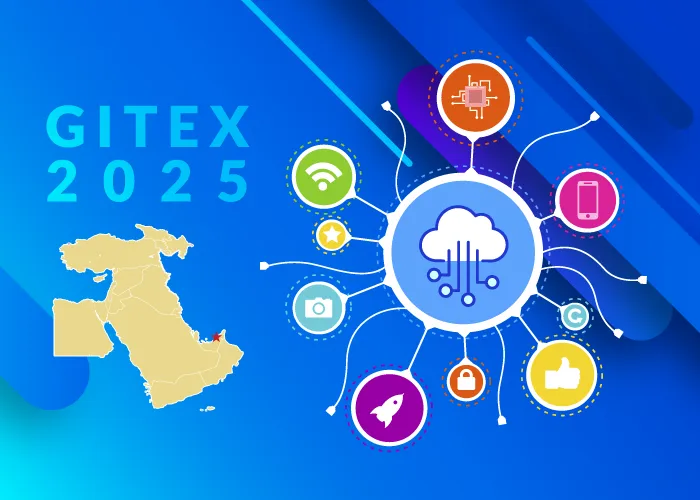Another incredible year exhibiting at GITEX has just come to a close in Dubai.
As a long-time attendee, it was clear this year’s event marked a significant acceleration in the region’s digital growth. From conversations on connectivity and infrastructure to witnessing firsthand the implementations, this year’s event reminded me how quickly the Middle East is progressing along its tech journey.
At our booth, we met dozens of industry leaders from around the world, each with a sharp eye on how global business communications must evolve.
The conversations made one thing clear: as companies in the Middle East and Africa evolve at a faster pace than ever, having reliable, flexible, and locally adapted communication systems becomes increasingly important.
For us at Global Call Forwarding, this year’s presence reinforced our long-term investment in the region’s ecosystem: being on the ground, listening to pain points, and helping companies unlock voice and telephony solutions that match their dynamic pace.
Seeing the market evolve allows us to transform insights into technologies that give our customers a competitive edge.
In this post, I’ll share:
- The top voice and telecom trends from GITEX 2025
- How we’re shaping the future of voice in MEA
- Voice-specific challenges across the region
- How global businesses are connecting with MEA customers
- What we’re building next to stay ahead
Top Voice & Telecom Trends from GITEX 2025
Voice and telephony aren’t just auxiliary services; they’re core to business continuity.
1. Telecom Infrastructure Modernisation with Enterprise Voice in Mind
At GITEX 2025, major ICT players highlighted how next-generation connectivity (AI-native cloud, 5G/5.5G, edge) is shifting from consumer-buzz to enterprise form-factor.
For example, Huawei showcased its AI-native cloud and intelligent network solutions in the region, designed to manage traffic intelligently, reduce energy consumption, and optimize capacity planning in real-time.
What this means for enterprise telephony: Businesses firms expanding across MEA require voice platforms built on a network that is not only robust but also tuned for low latency, cross-border reach, advanced routing, and regulatory compliance.
2. The “Local Everywhere” Model is Now Standard
Prospects emphasized the need for reliable localized phone numbers, whether for back-office support or to demonstrate local presence. We have heard repeatedly about displaying local phone numbers on business cards or localized websites, even though the routing may be global.
This is driving significant demand for solutions like Local 2-Way Voice for DID numbers and international toll-free numbers. This regional insight, along with the continued popularity of toll-free numbers for accessible support, proves that building trust starts with being reachable.
What this means for enterprise telephony: Voice and telephony platforms must deliver local numbers (UAE, KSA, South Africa), toll-free options in the region, and global routing—all under one centralized platform, enabling enterprise control and scale.
3. Integrated & Unified Global Voice Infrastructure
Across meetings and demos, another recurring theme was that traditional PBXs and native UC tools—like Microsoft Teams or Genesys Cloud—are limited in their global coverage in the Middle East and Africa. Many companies told us they rely on these systems for their core phone systems, but struggle when:
- They need local inbound numbers in multiple MEA countries.
- Their provider doesn’t support outbound caller ID or compliant routing for specific markets.
- Global sales and support teams must route calls across regions while maintaining unified analytics and CRM data.
- They need apps on different platforms or devices for flexible communication.
What this means for enterprise telephony: These gaps are why voice integrations and SIP connectivity are now top of mind for IT decision-makers. Instead of replacing their PBX or UC stack, enterprises are looking to extend it. This means integrating external carriers through BYOC solutions to bridge coverage gaps and improve resilience.
Likewise, CRM integrations with platforms like Salesforce and HubSpot are no longer a nice-to-have but a necessity for creating a unified view of the customer.
For companies expanding in MEA, the future of voice isn’t another standalone app, it’s an ecosystem. One where existing PBX, UC, CRM, and help desk systems connect with global, AI-powered telephony infrastructure that extends reach, compliance, and intelligence far beyond what any single platform can deliver.
4. Regulatory Complexity and “Hard-to-Reach” Market Voice Accessibility
Although GITEX’s public coverage emphasises AI, cloud and data infrastructure, telecom-industry sources at the show highlighted that MEA remains a region where voice infrastructure still has friction: regulatory fragmentation, inbound and outbound routing challenges, compliance requirements, lack of phone numbers in hard-to-reach countries, etc.
For example, Libya doesn’t offer traditional phone numbers or call forwarding numbers, making it difficult for businesses outside the country to expand within the region. A solution like Toll-Free FlexDial helps bypass these issues, providing accessible and flexible voice support.
Additionally, the spotlight was on secure cloud solutions and compliance-ready infrastructure. For businesses expanding across the MEA, this concern extends directly to their communication channels, which handle sensitive customer data. The conversations moved beyond general network security to the specifics of protecting voice data.
What this means for enterprise telephony: Businesses expanding in MEA are asking: “Can I launch a UAE local number quickly? Is my outbound routing compliant with KSA rules? Will calls from Libya or Africa reach me reliably?” This is where the importance of a compliant, Tier-1 carrier-grade network becomes critical. Businesses need assurance that their calls are secure, reliable, and compliant with regional telecom regulations.
5. Intelligent Voice and Communications Layer
AI was everywhere at GITEX, but the focus has shifted from theoretical possibilities to practical B2B applications. Instead of futuristic concepts, leaders were discussing how AI is helping automate repetitive work, extract insights from data, and deliver personalized customer experiences.
We spoke with several companies exploring AI voice agents and bots for Level 1 support (forwarding calls to a bot), freeing up human agents for more complex issues. This isn’t just about replacing IVR menus; it’s about creating natural, conversational experiences that resolve customer issues instantly.
The enterprise voice angle is that voice is now expected to be smart, encompassing transcription, sentiment & intent detection, auto-routing, and integration with CRM/UC platforms.
What this means for enterprise telephony: This move toward intelligent voice engagement highlights the growing need for platforms that can not only route calls but also provide the data to power these systems. It’s why features like our AI Call Insights are becoming critical, as they allow businesses to analyze call transcripts and sentiment to improve service and efficiency.
Supporting the Future of Tech in MEA
The MEA region is rapidly evolving into the next frontier of digital innovation, but for many businesses, communication infrastructure still lags behind their growth ambitions.
In our conversations and booth sessions at GITEX, several patterns emerged about how fast-growing companies are deploying voice infrastructure in MEA. Here’s how we help:
Common Voice Challenges in the Middle East
We repeatedly heard these pain points:
- Friction persists due to fragmented number procurement and unreliable call routing or termination.
- Many providers maintain separate providers per country or don’t cover MEA comprehensively, leading to a lack of a unified global voice platform.
This is where Global Call Forwarding steps in. We provide the strategic solutions needed to bypass these hurdles:
| Challenge | Our Solution | Value |
| Local Presence & Trust | Local 2-Way Voice, DIDs, Toll-Free Numbers in the UAE, KSA, South Africa, and beyond. | Builds customer trust; higher pickup rates; localizes business cards/websites. |
| Operational Efficiency | Global call forwarding and advanced routing, managed easily through an online control panel. | Centralizes global sales and support while providing a local contact point for customers. |
| Flexible Telephony Integrations | CRM & Help Desk integrations (Salesforce, Zoho, HubSpot) and BYOC Solutions (MS Teams, Zoom Phone, Genesys) | Provides compliant local numbers where major PBX providers cannot and integrates with major business apps. |
How Global Businesses Connect with MEA Customers
The path to success in the MEA region requires a seamless, local communication channel. We act as the single provider that makes this possible, as seen in these customer successes:
 EaseMyTrip, with offices across six countries, needed a single one-stop provider for its global telephony services. We delivered reliable international toll-free numbers and geographic numbers in desired locations, enhancing accessibility and maintaining their customer-centric reputation.
EaseMyTrip, with offices across six countries, needed a single one-stop provider for its global telephony services. We delivered reliable international toll-free numbers and geographic numbers in desired locations, enhancing accessibility and maintaining their customer-centric reputation.
 ScienceSoft, a US-based company serving Gulf clients, needed to generate sales locally while forwarding calls to their centralized marketing team outside the UAE. We offered a UAE National Number to build local trust and guarantee excellent, flexible call forwarding for local clients, as our global presence and reliable support are available even in hard-to-reach countries.
ScienceSoft, a US-based company serving Gulf clients, needed to generate sales locally while forwarding calls to their centralized marketing team outside the UAE. We offered a UAE National Number to build local trust and guarantee excellent, flexible call forwarding for local clients, as our global presence and reliable support are available even in hard-to-reach countries.
 Crystal Cruises uses local numbers that connect to a regional contact center to provide timely, high-end assistance to customers across different time zones, improving customer satisfaction and minimizing lost sales.
Crystal Cruises uses local numbers that connect to a regional contact center to provide timely, high-end assistance to customers across different time zones, improving customer satisfaction and minimizing lost sales.
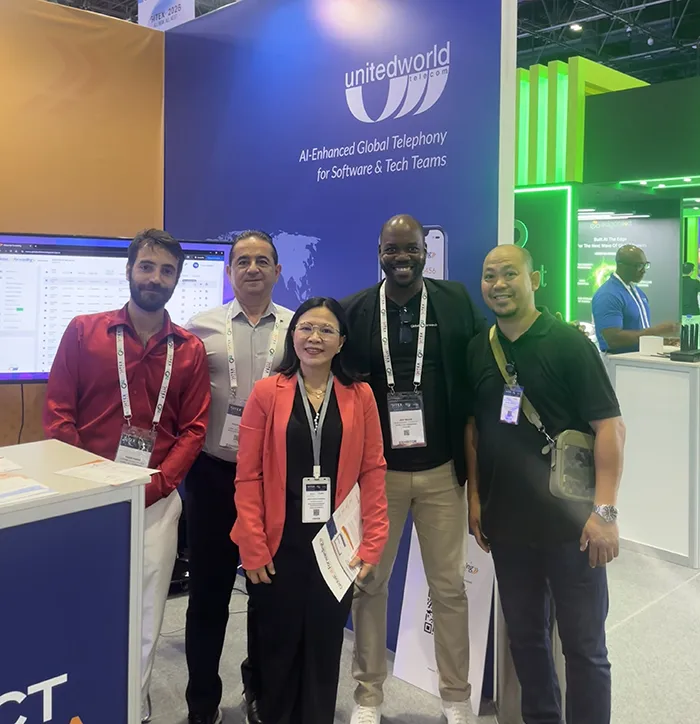
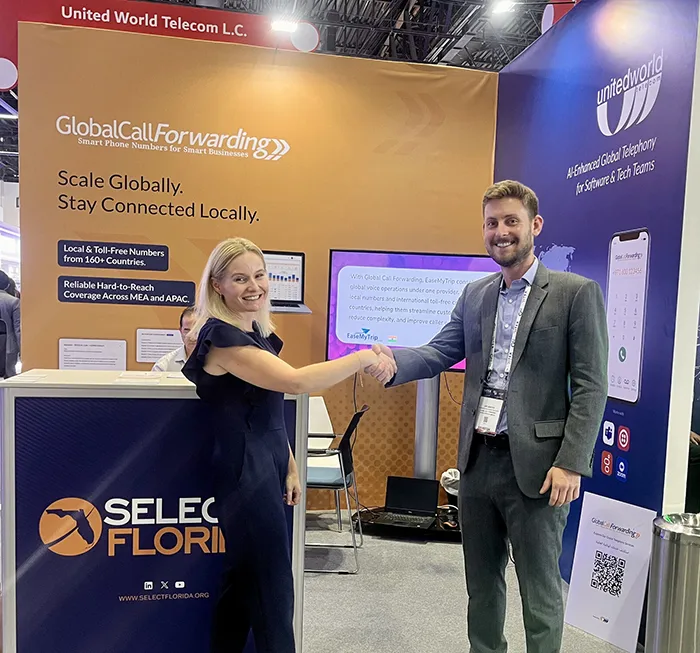
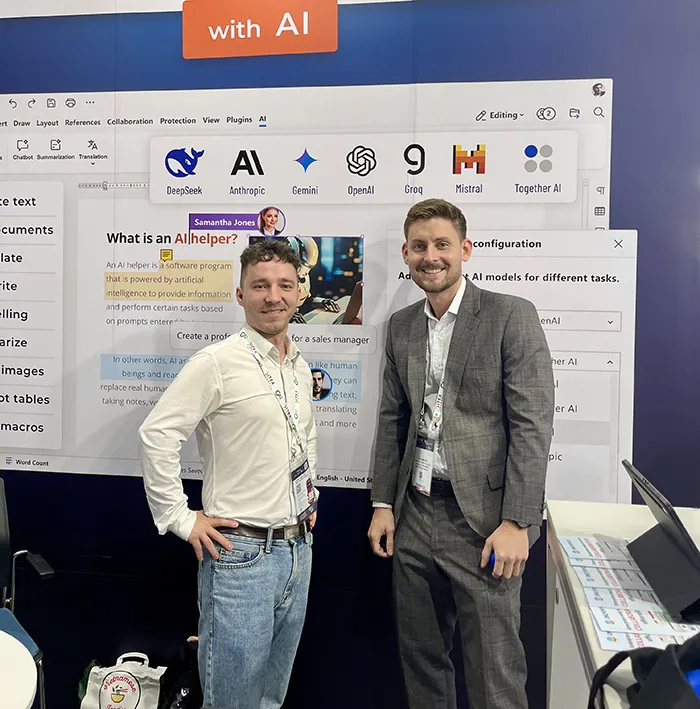
SoftTeco streamlines its Level 1 tech support by using a UAE number that forwards directly to a sophisticated Voice AI bot, allowing them to provide instant assistance for basic inquiries.
We’re Building for What’s Next
Global Call Forwarding is your dedicated voice partner for the rapidly developing Middle East region. We provide compliant, Tier-1 carrier-grade Middle East virtual phone numbers in over 160 countries.
With over 40 telephony features, including international call forwarding, AI call insights, outbound calling, integrations, custom reports, and more, users can manage global voice efficiently under one unified platform.
For companies scaling in MEA, the next generation of voice infrastructure matters. Our tech and software phone solutions are designed to improve operational efficiency and global coverage.
Our roadmap focuses on:
- Unifying fragmented voice infrastructure through flexible integrations and BYOC solutions
- AI Call Insights for advanced analytics and reporting and additional AI layers for smarter communications
- Regional routing reliability and built-in compliance architecture — so you can operate in Gulf Standard Time, reach callers locally with global scale, and avoid regulatory or carrier blind-spots.
In short, we’re positioning ourselves as the dedicated voice partner for enterprises expanding across MEA. We’re not just enabling calls today, but powering the voice-enabled business of tomorrow.
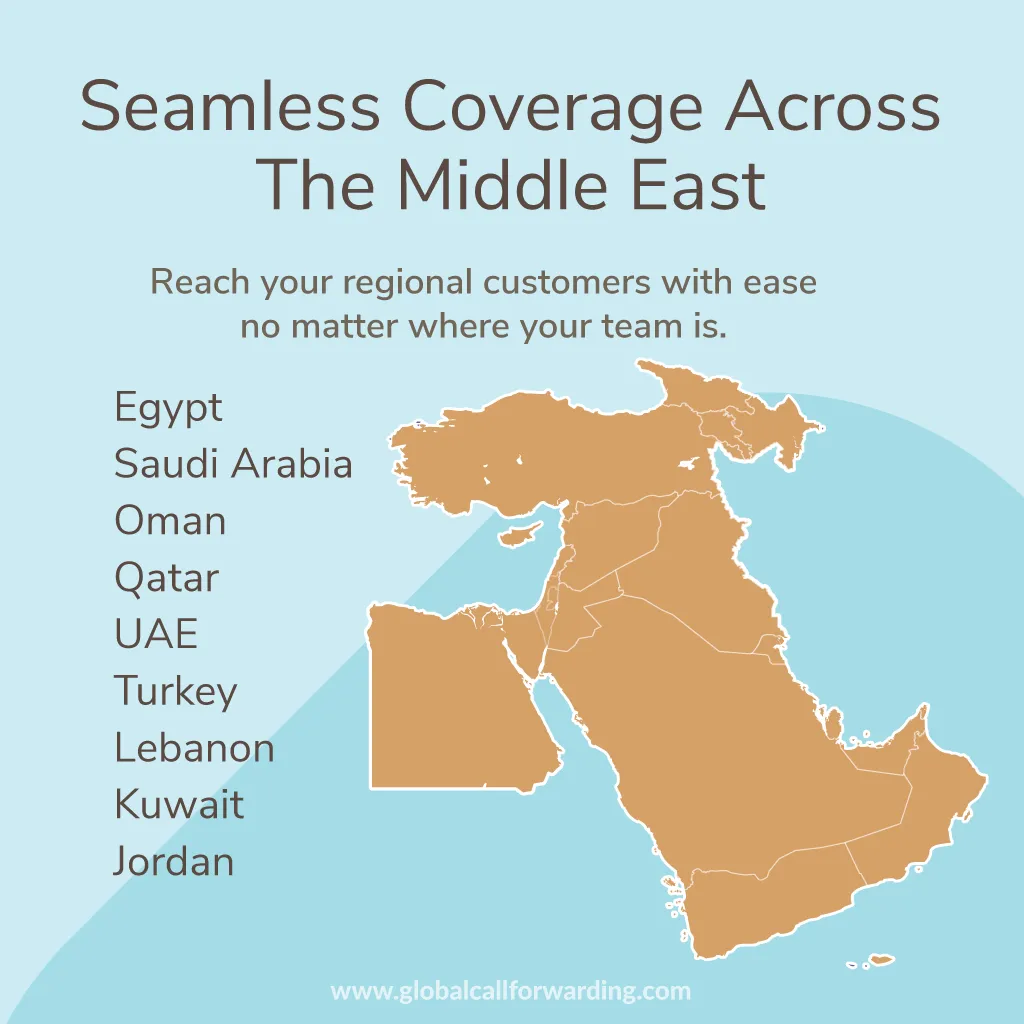
Connect with our MEA Experts
Walking away from GITEX GLOBAL 2025, the clear takeaway is this: tech adoption in MEA is real, accelerated, and expanding. But growth isn’t assured unless the communication infrastructure keeps up. For enterprises, a global telephony platform that is local in presence, global in scale, smart in functionality, and compliant in its delivery becomes a strategic enabler, not just a cost centre.
If your organisation is scaling across the Middle East and Africa and reviewing how to build or upgrade its voice infrastructure, let’s explore how Global Call Forwarding can be your voice partner.
We bring regional expertise, global reach, and enterprise-grade telephony capabilities that help you connect, scale, and thrive across this transformational region. Connect with our local experts today or chat with us online!


